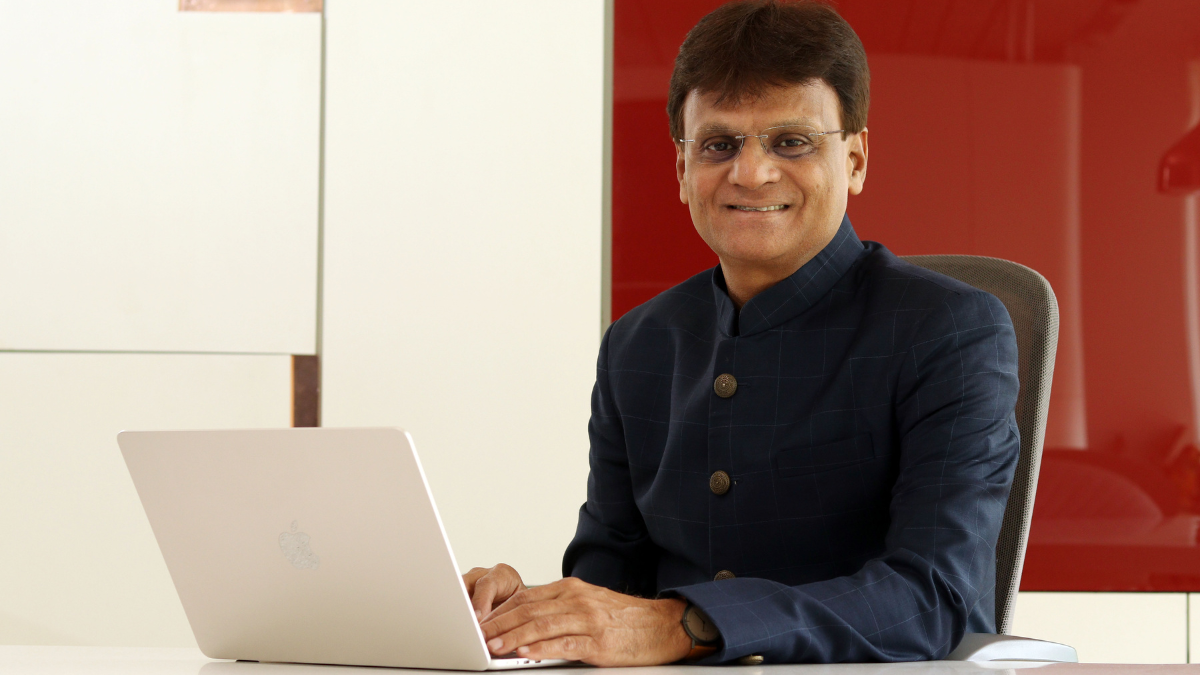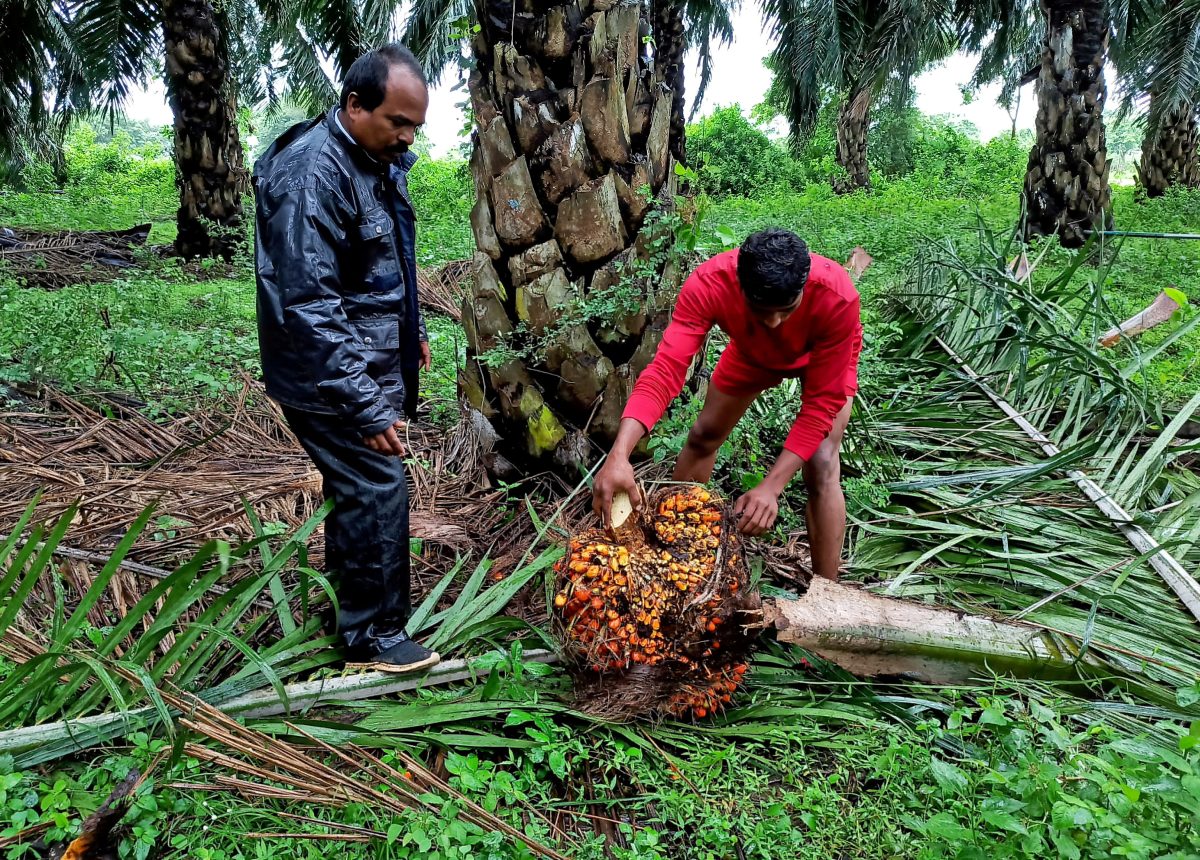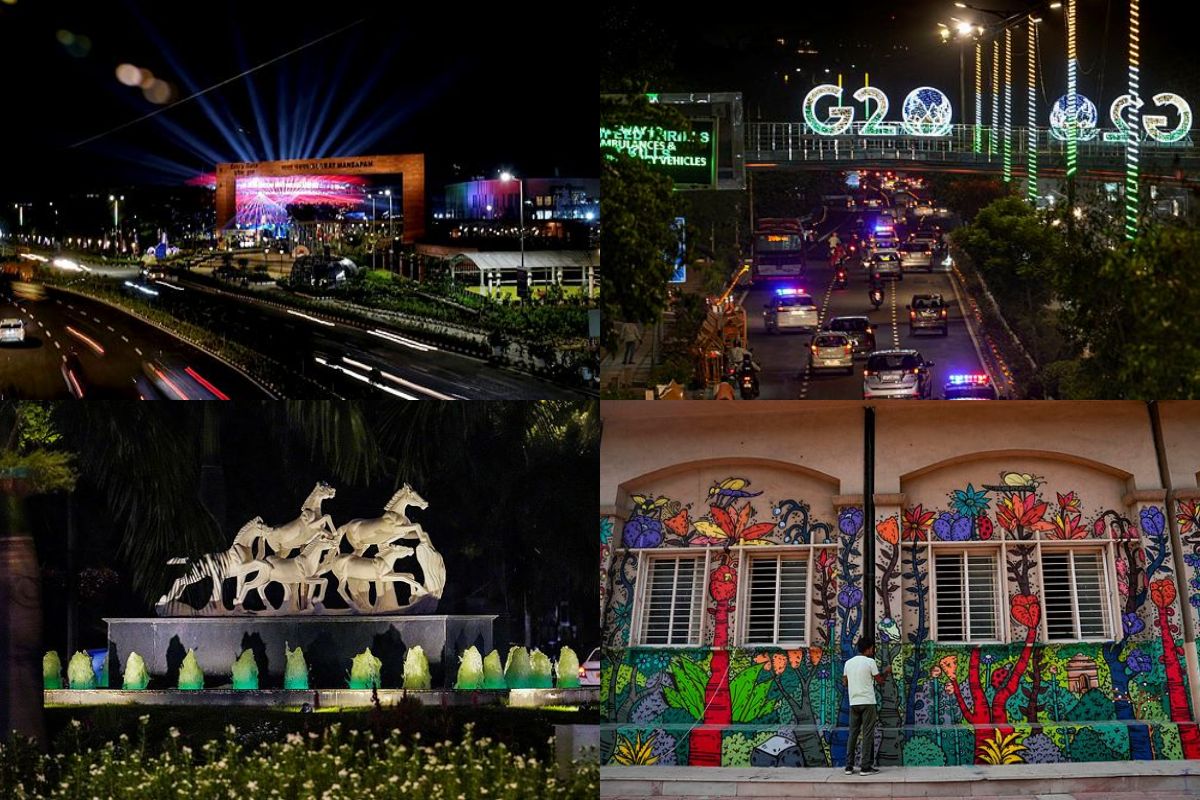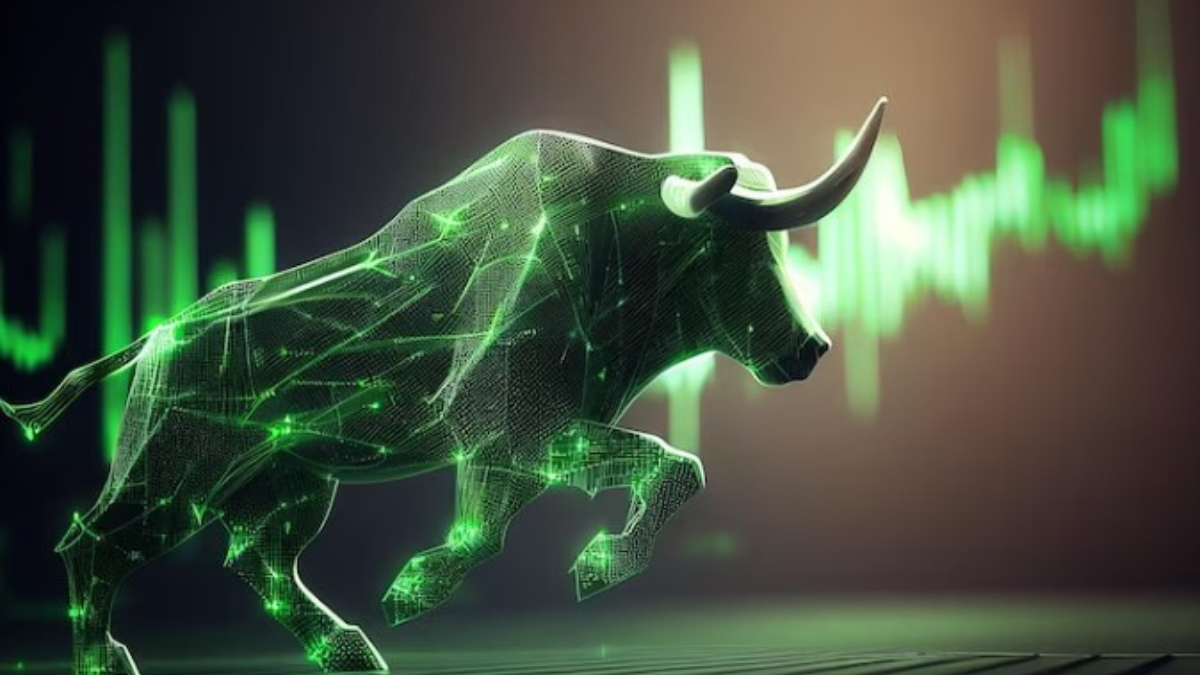By Deven Choksey
As a country we have inherited a rich legacy of over 5000 years. Adopting Bharat from India is sounding as meaningful as the path we are marching on currently. Bharat has come back and is an icon to recon with in the world now. We are a country with $ 3.6 trillion nominal GDP and is growing at 6.5 % to 7% CAGR. India’s market cap is about $ 4 trillion ( INR 3.28 L crore ). In 2025 India’s GDP is expected to cross $ 4 trillion and in following 10 years to 2035, expected to cross $ 12 trillion. Every developed country of the world today, in past 100 years, have had 20 GROWTH years to lead themselves to higher rankings in the global economy.
1960-80 belonged to Japan where they emerged as the 2nd largest country only after US.
1970-90 belonged to South Korea.
1990-2010 belonged to China and they emerged the 2nd largest country displacing Japan to 3rd position.
It is also interesting when observed that investors have made maximum wealth when the economy has moved up from $ 2 trillion to $ 5 trillion, which is the most rewarding phase of growth in the economy.
Performance comparison of UPA (Sh.Manmohan) & NDA (Sh.Modi) governmentsStatistics of 20 years of progress cardEconomyUPA (2004-2014)NDA (2014-2023)Morgan Stanley commentFragile economyFastest growing economyGDP-Absolute (Rs)98 lakh cr159.7 lakh crCapital Expenditure by Gol (Rs)3.92 Lakh cr -201410.9 lakh cr – 2023Agri Budget (Rs)21900 crore – 20141.25 lakh crore – 2023Forex reserve ($)$313 billion (May 2014)$600 billion (Aug-2023)FDI ($)$45 billion-2014$83.57 billion-2022Per capita income (Rs)86,454 -2014150,000 – 2014Poverty rate (%)22% -201410% -2023Income tax payers – Number3.8 Cr – 20146.77 Cr – 2023Defence Exports by India (Rs)1941 cr -201416,000 cr -2022Credit to farmers (Rs)8.5 lakh cr21.67 lakh crIndian economy rank in world10 by 20145 by 2023Welfare SchemeUPA (2004-2014)NDA (2014-2023)Tap water connection (Houses)3.2 cr up to 201412.7 Cr up to 2023Rural houses scheme (Nos)1.79 cr 20142.9 Cr up to 2023Ujjwala gas connection (Nos)No such scheme9.6 CrWBC toilets for ladies (Nos)No data available11.72 crPure drinking water-Nal se jalNo data available12.65 lakh crJan-Dhan yojana bank accountsNo such scheme49.65 cr accountsDBT payments (Rs)No effective scheme25 lakh Cr thro 300 schemesPMAY-Medical insuranceLimited insurance with Rajiv Gandhi scheme50 cr people- INR 5 Lakh medical insurance/personCorona VaccinationNo such pandemic happenedFree vaccine to all (INR 3.4 Lakh cr spent by GoI)Infrastructure WorkUPA (2004-2014)NDA (2014-2023)Airports (Numbers)74 up to 2014148 up to 2023Highways (Km)91,287 -up to 2014145,155 – up to 2023Railway new line/year (Km)1520 -20142625 – 2023Waterways (Numbers)zero111Mega food park (Numbers)2 up to 201423 up to 2023Vande Bharat TrainsZero34Production WorkUPA (2004-2014)NDA (2014-2023)Food production (Million MT)265 -2014323.55 – 2023Pulse production (Lakh MT)1.2 – 201482.21 – 2023Ethanol Production (cr lit)38-2014434 – 2023Index of Ind Production (IIP)103.3131.6EducationUPA (2004-2014)NDA (2014-2023)Universities in country (Nos)713 up to 20141113 (390 new universities)Colleges (Numbers)38,48943,796Medical colleges (Nos)700 up to 20141341 (up to 2023)Medical MBBS seats82,466 up to 2014152,129 up to 2023Schools built (Nos)6,37,000 in last 70 years6.53,000 in last 9 yearsNEP (New Education Policy) for skillsNo WorkNEP implementation startedMedical FacilitiesUPA (2004-2014)NDA (2014-2023)Jan Aushadi kendra (Nos)80 up to 20149484 – up to 2023AIIMS in India (Nos)7 up to 201423 – upto 2023
Who will grow the market cap from $ 4 trillion (current) to $ 12 trillion in next 10-12 years ?
Let me share my perspective and present to you the catalysts who will create wealth for investors.
1. Green Energy
In September 2023, in the G20 presidency, India’s PM Shri Narendra Modi made a historic move. PM Modi convinced developed nations to finance $ 5.9 trillion amount to the developing nations towards climate change related funding. The world wants to be carbon neutral by 2050.
2023 marks a beginning of a new era for the world, like what internet did in the last century, mission carbon neutral will produce some of the profound changes for the world in this century.
Green is a new word which is added for producing Hydrogen. Green Hydrogen is a game changer in more than many ways. In a simple term, the green hydrogen is produced through a process called electrolysis, which uses electricity to split water (H2O) into its two primary components: hydrogen (H2) and oxygen (O2). The “green” in green hydrogen refers to the fact that the electricity used in this process is generated from renewable sources, such as wind, solar, or hydropower. This makes green hydrogen an environmentally friendly and sustainable energy carrier.
The current costs of producing green hydrogen is about $ 6-8 / Kg. Reliance Industry has announced that they would aim at producing it at $ 1-2 / kg by 2030 or earlier. It implies that cost of producing power to consumer can potentially come down to ¼th of today’s costs. India’s industry today spends about INR 11- 13 / unit for power. Imagine it comes down to INR 3-4 / unit! In one way, power costs coming down would lead to a significant disruption in cost of production for industrial and consumer products. It sounds a good music to ears that inflationary pressure will come down systematically in times to come. The money saved on power will certainly lead to increase in shifting demands to other products.
On the other end, to produce green power, birth of new industry will emerge. Solar, wind, biogas and hydroelectricity related industry and its eco-systems will attract investors at first stage, which would be followed by storage and transmission eco-systems and in parallel the investments would be in newer products and its manufacturing. This is a move which will set narratives for growth in the global economy. In other words, you can argue that $ 5.9 trillion financing for carbon neutral world will take global economies out of trouble and would lead the world to a much larger growth. Bharat is a prime beneficiary among developing economies due to its commitments to newer build infrastructure at the cost of $ 142 billion in coming 7 years. Bharat is being seen as the Green Hydrogen Capital of the world.
2. Infrastructure Spending
India is the only country in the world who has gone ahead in announcing the amount of money which will be spent on building the infrastructure as the world is heading to carbon neutral in next 3 decades. In 2019 PM Modi announced spending of $ 110 billion till 2030 in building massive infrastructure in the country. In 2023, it was revised to $ 142 billion.
INR 10 L crore is the allocation for spending in infrastructure sector for FY 23-24 which is 3.3% of the GDP.
Railways: INR 2.4 lakh crores has been allocated for Indian Railway in 2023 which is 9 times growth over 2014. 75 Vande Bharat trains and 200 new Vande Bharat sleeper trains are expected to come. Total 1275 stations to be upgraded in the coming years.
Road: India has allocated INR 2.7 lakh crore for road building of the nation for the year. Road infrastructure is going to push the connectivity both for passengers and industries at a much more efficient level.
Airports: Indian govt has spent nearly INR 42,000 – INR 45,000 crore between 2018-2023 for the airport developments. Also, there is a plan to invest INR 1 lakh crore in the coming quarters.
Sea Ports – INR 6 lakh crore is to be invested by 2035 through different projects. India’s one of the biggest port development plan Sagarmala under which six new mega ports would be made and it would be a great thrust for the Industrial connectivity as well as trade connectivity with rest of the world.
Renewables- Indian Govt has provided INR 35,000 crore outlay for green energy in 2023.The country is targeting 450 Gigawatt (GW) of installed renewable energy capacity by 2030 and 60% is expected from solar. Solar power capacity has increased by more than 18 times, from 2.63 GW in March,2014 to 49.3 GW in the end of 2021.
Logistics –Indian Govt is likely to spend INR 1.3 lakh crore next financial year. It has spent INR 37,000 crore approximately on Dedicated Freight Corridor in last two years. The DFC would be huge enabler of faster trade mobility in India which make the entire logistic route much more efficient.
Social Infrastructure- The social sector outlay by Central and State govt was INR 21.3 lakh crore in FY23 and it was 9.15 lakh crore in 2015-16.
Digital Infrastructure: Indian govt has allocated INR 29,447 crore from 2018 to 2023 for the digital India project. IT spending in India is expected to increase to $110.3 billion in 2023. In the union budget, 2023-24, the allocation of for IT and Telecom sector in the union budget stood at INR 97,578 crore.
.
3. Spiritual Tourism
With more than 35 lakhs Mandirs in the country about 15 to 20% of the population is directly / indirectly earns their lively hood due to massive surge in spiritual tourism in the country. I have researched the Mandir-Economics and happy to share how it provides earnings to people, the business and build GDP of the country. Newly developed temple complexes at Varanasi, Ayodhya in UP, Somnath, Dwarka in Gujrat, Mahakal in MP, Nathdwara in Rajasthan, Statue of Equality and various temples including Balaji Temple in AP are some of the spiritual designations where millions of tourists visits during the year. In this festive season, it is reported that some 5 lakh tourists will be visiting temple towns and spiritual tourism is expected to get a lot of boost.
India’s religious and spiritual segment reached a value of $58 billion in 2023 and it is expected to grow 10% CAGR during 2024-2032. Different schemes like PRASAD has been announced by the govt. The govt is spending INR 20,000 crore for Ayodhya project and it likely to deliver a strong growth to the entire spiritual tourism sector of India.
4. Consumer Spendings
India is a unique economy. We have festivals all throughout the year. Diwali festivals would lead to wedding seasons and thereafter every month in various parts of the country we have celebrations from festivals.
Let me share one such anecdotes of how the demand generation and discretionary spending happens in the Weddings Season.
35 lakh weddings are planned between Nov 23 – Dec 15, 2023. It is estimated that each wedding spent is between 3 L to 1 crore on an average.
Various industries including, Jewellery, Paints, 2 wheelers, Passenger Vehicles, apparel, footwear, liquor, Gifting, sweets, dry fruits, groceries, traveling etc gets a demand boost.
An average amount of 4 to 4.25 L crores will be spent in the economy in the weeding season, which results in also creating massive employment apart from industrial product demands.
Apart from the wedding season, there is a festive season that brings cheer to consumer spending. Typically, for businesses, the festive season starts from Chingam in August and extends to Bhai Dooj in November. This festive season spans around 81 days. During this period, discretionary consumption becomes a significant part of consumer spending. Consequently, products such as automobiles, jewellery, electronics, and more tend to experience increased demand. For example, the festive season for the automobile sector is expected to be remarkable in 2023, following two less cheerful years characterized by supply-side constraints and some demand drag due to delayed recovery in the rural economy. This year 1 million vehicle sales are expected during this period. This shows how the spending towards discretionary items in India is growing. Auto is another example of rise in discretionary spendings by the consumers. In 1992-1993, Automobile sector contributed 2.77% of the national GDP and it has gone up to 7.7% presently.
Passenger Vehicle Market: Indian Passenger Vehicle segment currently stands at approximately $41.6 billion in 2023 but it is expected to go up to $67 billion by 2028. The expected CAGR for the same is around 10.27% and SUV segment is expected to be the largest share among passenger vehicle segments in India. Also, PV sales would contribute to the 5% of the overall PV sales in India.
Electric Vehicle: India sold 832,434 EVs in 2023-24 till August 2023 and India is likely to sell 17 million units by 2030.A study by CEEW recognised that India’s EV industry has $206 billion opportunity in India by 2030 and for this $180 billon investment in vehicle manufacturing and charging infrastructure is required. The govt is aiming for 30% of the total car sales to be electric by 2030.
Two-wheeler & Three Wheeler: This segment is likely to see one of the most significant surges compared to all other categories between 2023 and 2028.The two-wheeler sales are most likely to nearly double from 16.3 million units to 30.7 in FY23 million. The three wheeler market size for India in 2020 was $7.64 billion and it is likely to go up to $14.02 billion in 2027.This signifies the opportunity across segments.
Commercial Vehicle Market : India’s commercial vehicle volume is expected to grow 7%-10% in FY 24. The Light commercial vehicle market is expected to grow at a CAGR of 11.5% during 2022E-2028E on account of fast growing logistical needs and growing e-commerce requirements.
Farm Equipment: India’s agriculture equipment market is expected to reach INR 1852 billion in 2028 from INR 1023.3 Million in 2022. It is likely to fetch a growth of 10.4% during the period aided by mechanical operations like tillage, sowing ,plant protection sowing, irrigation and threshing, etc.
ORV (Off-Road-Vehicle): As the elevation in income level takes place with increase in disposable income, market size for ORV is likely to see significant growth. India’s ATV market (ATV- All Terrain Vehicle & UTV- Utility Terrain Vehicle) market was valued at USD 400.49 million in 2022 and is estimated to reach USD 929.98 by 2030 with a CAGR of 10.22%
Recent fiscal number shows significant rise in tax collection. For the last two and half years central govt’s tax collection is growing faster than nominal GDP growth. GST collections reached record high of INR 1.87 lakh crore in April and net direct tax collections reached all time high to INR 14.19 Lakh crore in FY22. These are reflection of stronger growth in businesses as well as rising tax compliant behaviour among individuals. Also, India’s tax collection is expected to double in next 4 years which would further add cushion to fiscal deficit of the govt. Consequently, all the stakeholders ranging from Industries, govt, individual investors and financial industry are likely to be the beneficiary of India’s potential growth.
5. Investments by Investors
Investors are the growth providers to these economic measures. As the drivers of growth are becoming more and more prominent for the Indian economy, investors are also showing their confidence by investing quite significantly in the growth of Indian economy. Even, it is not many years ago, when the contribution from the retail or individual investors have gone up.
Mutual Fund : The AUM size of Mutual Fund industry has gone up to INR 7.46 trillion in 2013 to INR 46.58 trillion as on 30th Sept’23 which is more than six fold increase in a span of 10 years. The SIP flows have also increased significantly in last decade. The monthly SIP flows gone above INR 15000 in July’23 whereas INR 14,500 crore was the full year SIP inflow in FY14. However, this is only with 3% of the population investing actively in Indian equity market vs China’s 13%, UK’s 33% and USA’s 55%. So, sky is literally the limit as far as domestic inflows are concerned.
Insurance Premium: The collection of Insurance premium is also one of the important metric for the financialization of the Indian economy. Significant part of the insurance premiums also flow towards the investment world. The life insurance premium collected in FY23 was 3.71 lakh crore and insurance premium is expected to grow 14% CAGR per annum in local currency given the penetration is expected to go up.
IPO: Indian capital market has been seeing strong buoyancy not only in secondary market but primary market as well. Indian companies raised whopping record amount of INR 111,547 crore in FY22 and INR 52,116 crore in FY2023. It shows the depth of capital market and rise in participation by retail investors which is likely to increase quite significantly in the coming years.
Fixed Deposits and Savings Accounts: Indian investors prefer fixed deposits or savings account over equity because of multiple reasons. Though investors are shifting towards preferring equity gradually but still 90%+ investors prefer deposits and RBIs total bank deposits reach record high of $2242 billion in March’2022. These deposits are strong backbone for the Indian credit system as well.
All these above points indicate the depth and breadth of investments made by Indian investors and how the domestic flows are making the investment wall of India more resilient and robust which was more fragile earlier because of its sole reliance on foreign flows. Also, India was included in the emerging bond market index of JP Morgan, starting from June 2024 and it is likely to receive $23 billion inflows. It shows the robust mix of domestic as well as foreign investment flows which should be the driving force behind the growth prospect of Indian economy.
Challenges ahead:
Unforeseeable Events
Over the last ten years, geo-political construct was mostly stable, but lately, there have been some problems in Europe and West Asia. However, history teaches us that when bad things happen, like big financial crises or wars, markets tend to bounce back quickly. So, instead of worrying too much about these big-picture issues, it’s usually a good idea for investors to focus on the basic strengths of the companies they’re investing in.
The below table shows that, on an average, markets recovered in about 1.4 years after crashes, and investors often end up making an average profit of 107%. This means that the scary times in the market can be chances to make money. People who stay positive during uncertain times tend to grow their wealth in the long run.
Counter inflationary measurements
Post covid world has seen abrupt rise in inflation across the major emerging markets as well as developed markets due to the fiscal and monetary stimulus provided by the respective countries. So, the counter inflationary measurements might be more impactful for developed world as the severity of inflation is more rampant there. However, Indian companies which are having strong fundamentals coupled with robust leadership are likely to capture sizeable growth backed by growth of the Indian economy. Hence, counter inflationary measurements unlikely to impact the fundamentally strong companies.
Tighter liquidity
Despite central bankers turning off the liquidity tap, they have printed about $25 trillion stimulus over the last 15 years. The global currency float has risen from $77 trillion in 2008 to over $105 trillion. This liquidity cushion is expected to provide sufficient shock-absorbing power to the global economy, giving it an advantage compared to the past. .
Investment Opportunities
As India stands at an interesting inflection point, it is likely to offer investment opportunities of a century across various themes and companies. If the last decade revolved around consumption, the next decade has started shifting gears toward manufacturing, led by both private and public capital expenditures. Simultaneously, the increase in disposable income and elevation in the standard of living are likely to push discretionary consumption and value-added services to the next level of growth. Digital infrastructure, automation, faster internet speeds (5G), and most importantly, artificial intelligence, are expected to fast forward and enhance the benefits of growth for everyone in the country as well as outside the country. Thus, there is a buffet of investment opportunities that will entice investors.
Caution / guidance to investors
Though opportunities are rising but opportunities bring risk as well. Even though valuations of Indian market is not in a bubble territory but it is not cheap either. So, investors must consider the risks as history shows us some lessons. Japan’s Nikkei Index hit 39,000 in 1989, never reached again. 32 years later, it’s at 31,259. In the same time, Japan’s GDP has grown 65%, from $3 to $5 trillion.
Sometimes, buying at rich multiples doesn’t pay off over an entire lifetime, even if the underlying asset is ok. Currently, Indian equities, especially mid and small-cap stocks, are trading at high valuations that surpass the anticipated near-future growth. Investors should avoid purchasing these expensive stocks and wait for compelling & corrected valuations. Many large-cap companies, despite their substantial earning potential, are currently undervalued. It’s an opportune time to invest in them.
Conclusions:
New SY of 2080 begins with lots of promises, great hopes and so much of blessings as the nation is entering into an era which is now called as: India’s Century.
Wishing you a happy and prosperous new year as you grow your wealth by 3x in coming 10-12 years.
(Mr Deven Choksey is the Managing Director of DRChoksey Finserv Pvt Ltd. Views expressed are the author’s own. Please consult your financial advisor before investing.)




